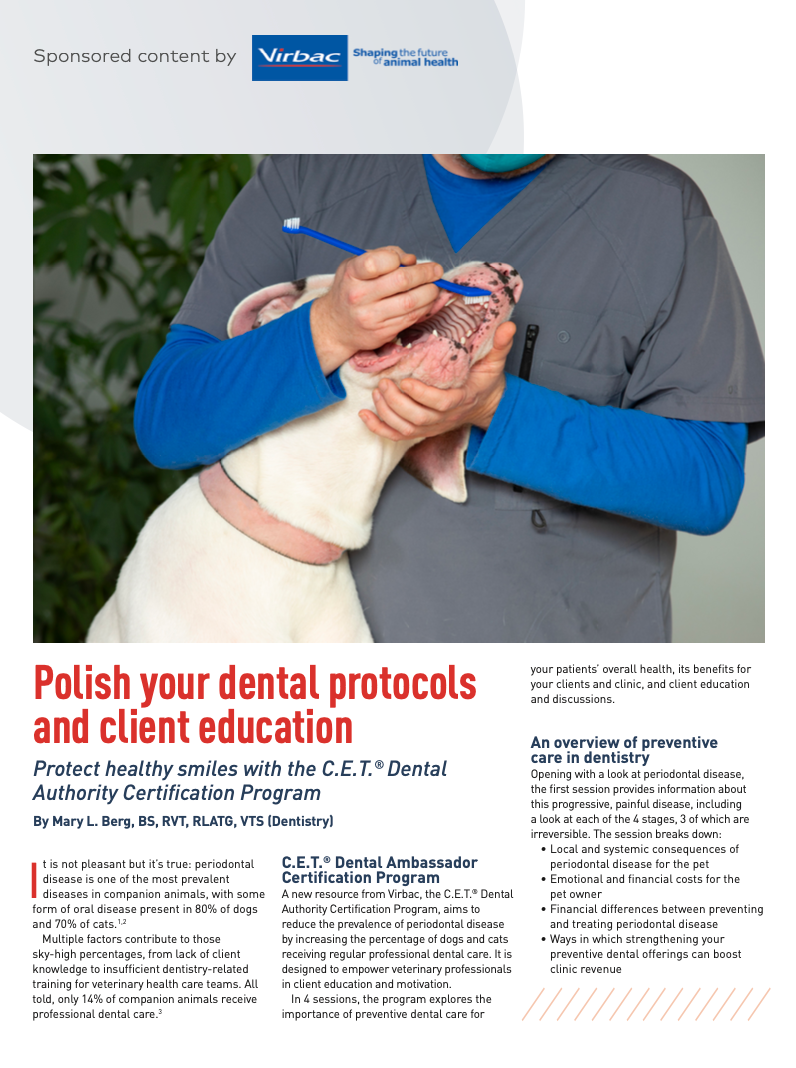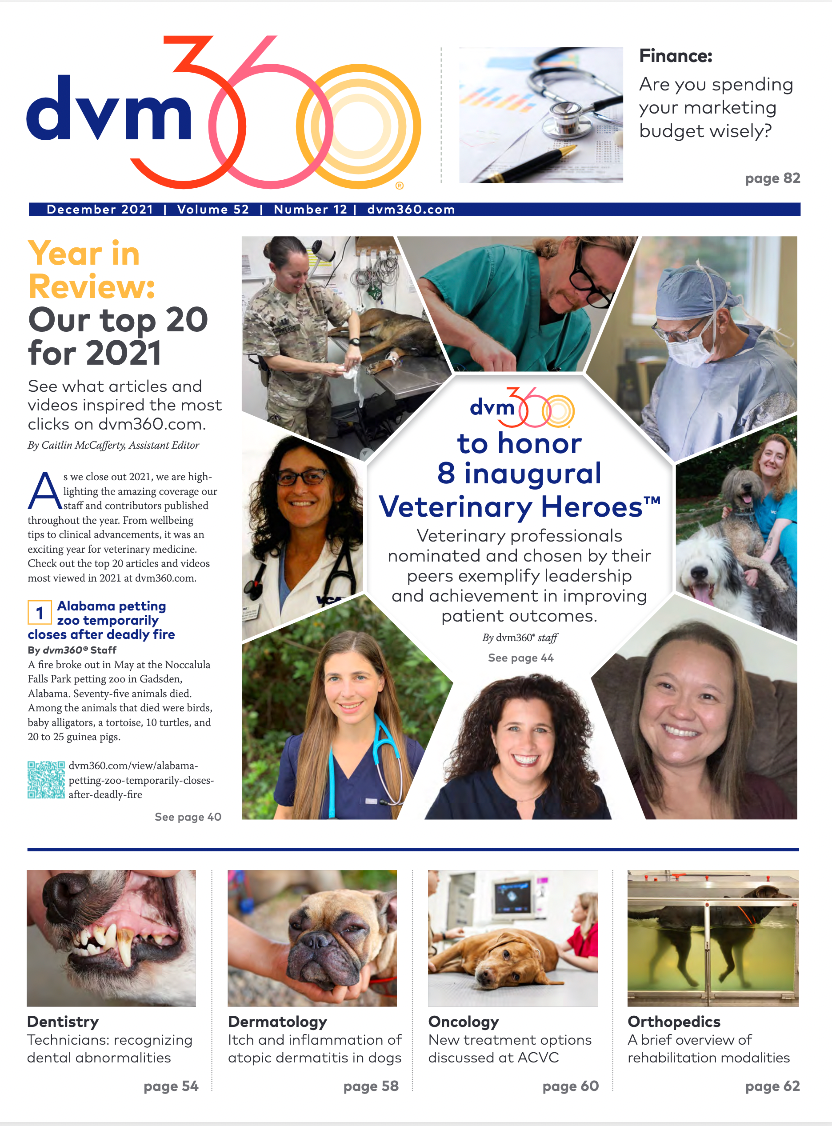It is not pleasant but it’s true: periodontal disease is one of the most prevalent diseases in companion animals, with some form of oral disease present in 80% of dogs and 70% of cats.1,2
Multiple factors contribute to those sky-high percentages, from lack of client knowledge to insufficient dentistry-related training for veterinary health care teams. All told, only 14% of companion animals receive professional dental care.3
About the program
- Free for all interested team members
- Easy-to-digest online format
- Asynchronous, so participants can learn at their own pace
- Dental Ambassador certificate
- Includes Virbac C.E.T.® Dental Ambassador clinic kit with in-clinic and client education resources and lapel pin to identify Dental Ambassadors
C.E.T.® Dental Ambassador Certification Program
A new resource from Virbac, the C.E.T. Dental Authority Certification Program, aims to reduce the prevalence of periodontal disease by increasing the percentage of dogs and cats receiving regular professional dental care. It is designed to empower veterinary professionals in client education and motivation.
In 4 sessions, the program explores the importance of preventive dental care for your patients’ overall health, its benefits for your clients and clinic, and client education and discussions.
An overview of preventive care in dentistry
Opening with a look at periodontal disease, the first session provides information about this progressive, painful disease, including a look at each of the 4 stages, 3 of which are irreversible. The session breaks down:
- Local and systemic consequences of periodontal disease for the pet
- Emotional and financial costs for the pet owner
- Financial differences between preventing and treating periodontal disease
- Ways in which strengthening your preventive dental offerings can boost clinic revenue
Professional in-clinic care
In session 2, we roll up our sleeves and examine the basic components of professional preventive dental care for your patients. This includes a review of the steps that make up a complete oral health assessment and treatment (COHAT)4:
- Educating the client
- Examining the anesthetized pet
- Charting any disease process, pathology, or anomalies
- Taking radiographs
- Removing supra- and subgingival plaque and tartar
- Conducting hand scaling, polishing, and irrigation
- Giving the client at-home follow-up care instructions
- Scheduling the pet’s next appointment (if possible)
As that first step suggests, client education is key, and your voice matters. When it comes to pet dental care, approximately 85% of clients will accept your recommendation, whether immediately or after some consideration.5
With that in mind, the session also explores how to successfully communicate the need for preventive care, including regular at-home care on the client’s part.
At-home care
Educating the client about the need for regular at-home care can lead to a better outcome for the pet, strengthen the clinic-client relationship, and give the client a sense of involvement, achievement, and satisfaction.6
Once you have completed COHAT for a patient, including client education, the pet owner needs to apply your recommendations at home. This session looks at active (eg, tooth brushing) and passive (eg, dental chews) at-home care, discusses the place and relative value of each, and provides specific examples and suggestions.
Relationship building
The program wraps up with client communication tips and ideas for harnessing all team members in building client trust and confidence and, by extension, compliance with your recommendations. It also explores the benefits of consistent follow-up communication, as well as ways to address common client questions and misperceptions about in-clinic preventive care.
The case for dental ambassadors
In an age of information overload, dental ambassadors can reach through the noise, communicating clearly to help clients understand the need for consistent preventive dental care in their dogs and cats. Both clinics and clients want the best possible care for pets, and this free program can be a valuable tool in reaching that goal.
For more information or to register for the C.E.T.® Dental Ambassador Certification Program, visit cetambassador.virbac.com or talk with your Virbac representative.
References
- Niemiec B, Gawor J, Nemec A, et al. World Small Animal Veterinary Association global dental guidelines. J Small Anim Pract. 2020;61(7):395-403. doi.org/10.1111/jsap.13132
- Niemiec BA, ed. Veterinary Periodontology. Wiley-Blackwell; 2013:81.
- Brush up on your pet’s oral care. Nationwide Pet Insurance. www.petinsurance.com/health-zone/pet-health/pet-dental-care/brush-up-on-your-pets-oral-care/. Accessed May 25, 2021.
- Berg ML. Companion Animal Dentistry for Veterinary Technicians. Bluedoor Publishing; 2020.
- Bellow J. The Practice of Veterinary Dentistry: A Team Effort. Iowa State University Press; 1999.
- 2019 AAHA dental care guidelines for dogs and cats. American Animal Hospital Association. Accessed October 3, 2021. www.aaha.org/aaha-guidelines/dental-care/dental-care-home/

